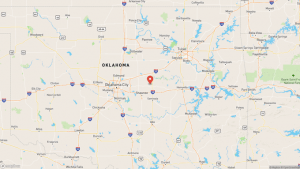A swarm of earthquakes was recorded Tuesday off Alaska’s Aleutian Islands, including the largest with a magnitude of 6.8 followed by aftershocks.
There were few reports of the underwater quakes in the North Pacific being felt in nearby communities in a sparsely populated region of Alaska and no reports of damage, officials said.
Natalia Ruppert, a seismologist at the Alaska Earthquake Center, said it was a “very unusual, very energetic swarm of earthquakes.”
Also Read: Earthquake of magnitude 6.2 strikes offshore northern California
The largest quake, at magnitude 6.8, was preceded just minutes before by a couple of foreshocks. The strong quake occurred about 2:36 a.m., about 40 miles (64 kilometers) southeast of Nikolski, a community of 39 residents on Alaska’s Unmak Island. The community is about 900 miles (1,448 kilometers) southwest of Anchorage, the state’s largest city.
About an hour later, a magnitude 6.6 aftershock was reported in the same area, followed throughout the morning by about a dozen aftershocks with many magnitude 4.0 or higher.
Also Read: Northwestern US witnesses swarm of over 40 earthquakes in 24 hours
State emergency officials checked in with both Nikolski and Unalaska, home to Dutch Harbor, one of the nation’s busiest commercial fishing ports, after both larger quakes, said Jeremy Zidek, a spokesperson for the Alaska Division of Homeland Security and Emergency Management.
Neither community reported any damage, and in fact those in Unalaska — which is located about 110 miles (177 kilometers) northeast of the epicenter — didn’t feel either, he said.
This area of the Aleutians, a chain of islands that jut off from southwest Alaska, has experienced a lot of seismic activity in the last year, including several large earthquakes, Zidek said.
None has produced any major damage or a tsunami, he said.
“We don’t want people to become complacent just because there’s been strong earthquakes and they didn’t generate tsunamis,” Zidek said. “That doesn’t mean that the next strong earthquake won’t.”
He cautioned if a community activates a tsunami warning siren or if a quake produces violent shaking for 20 seconds or more and you’re near a coastal area, “it’s time to head for higher ground.”






